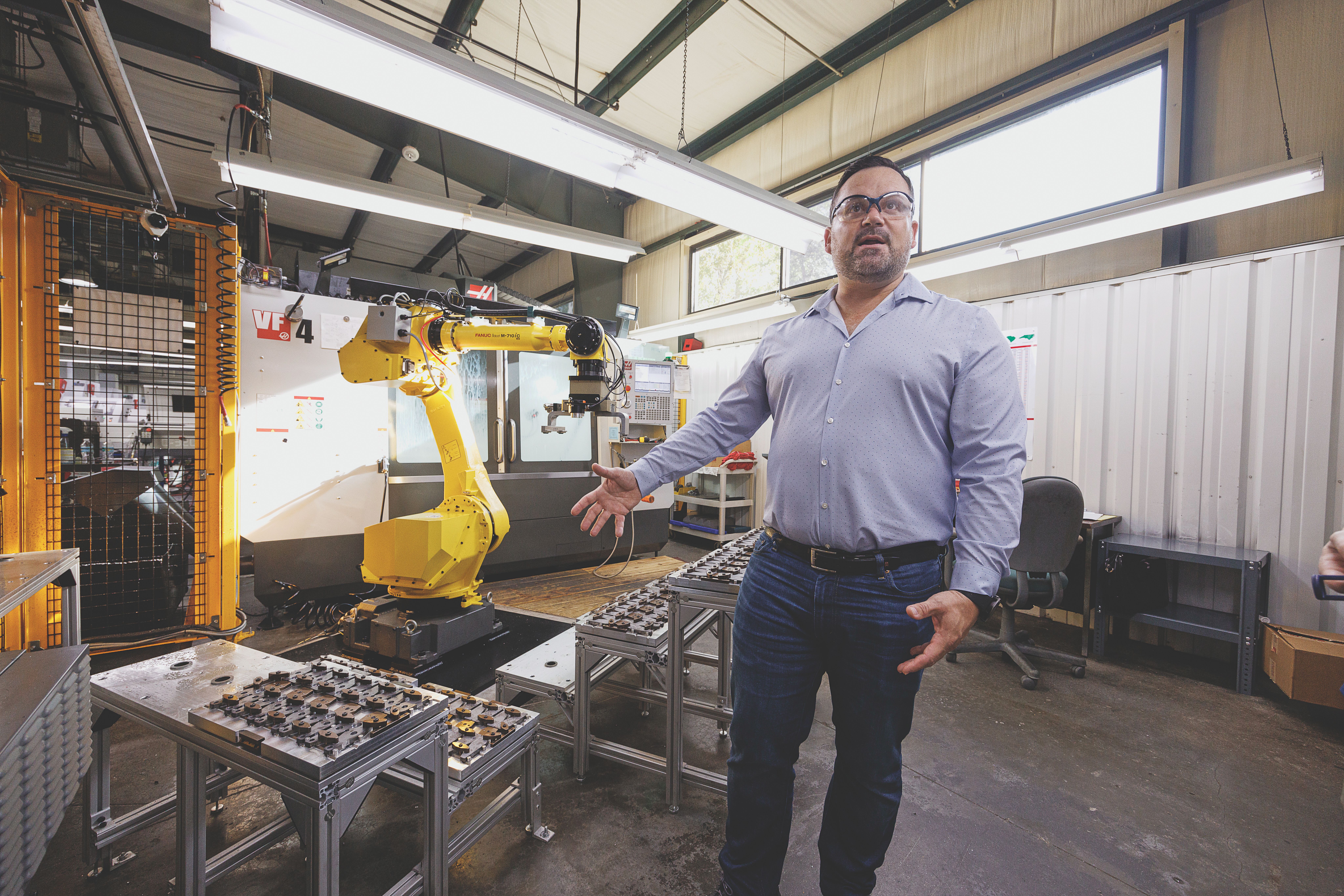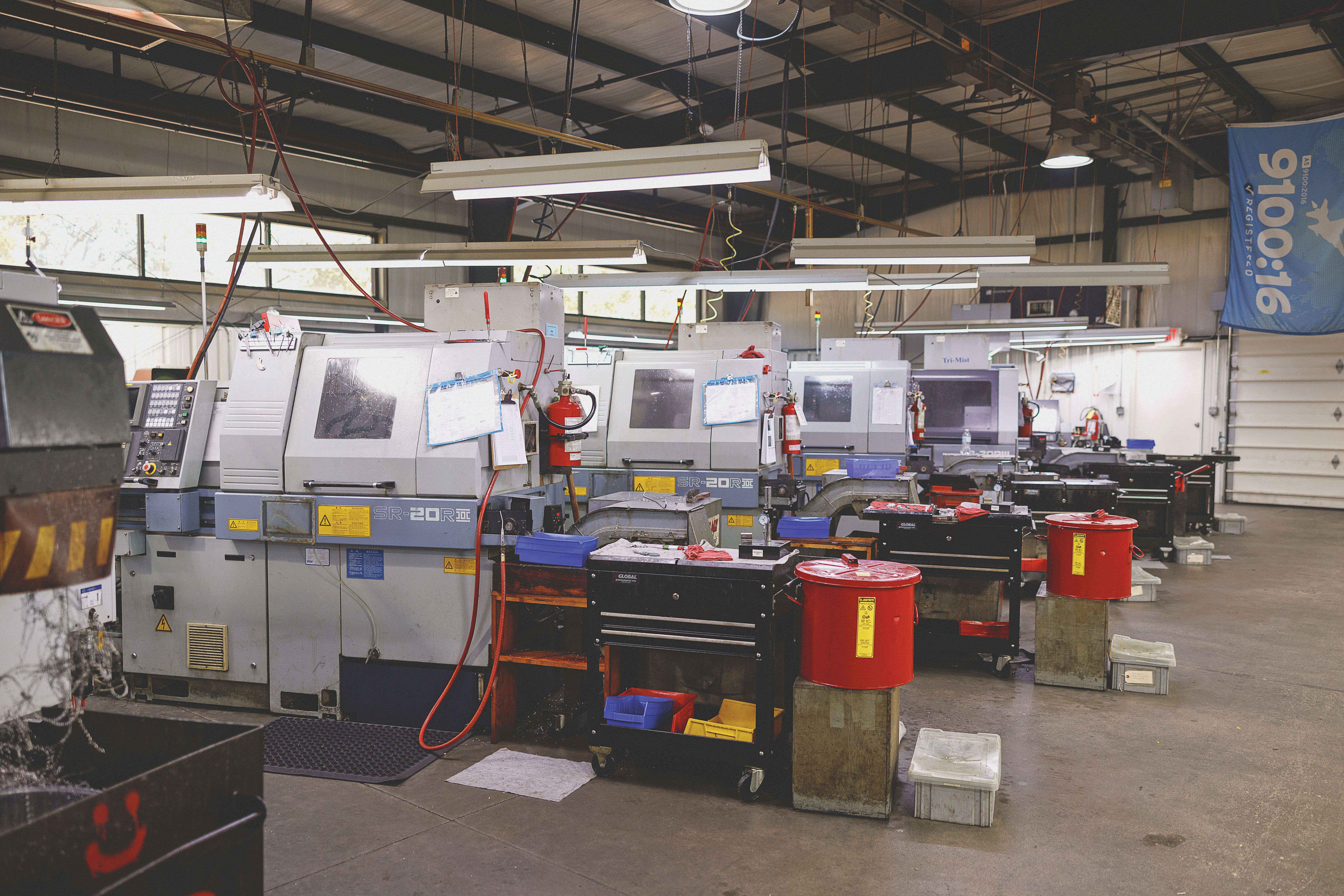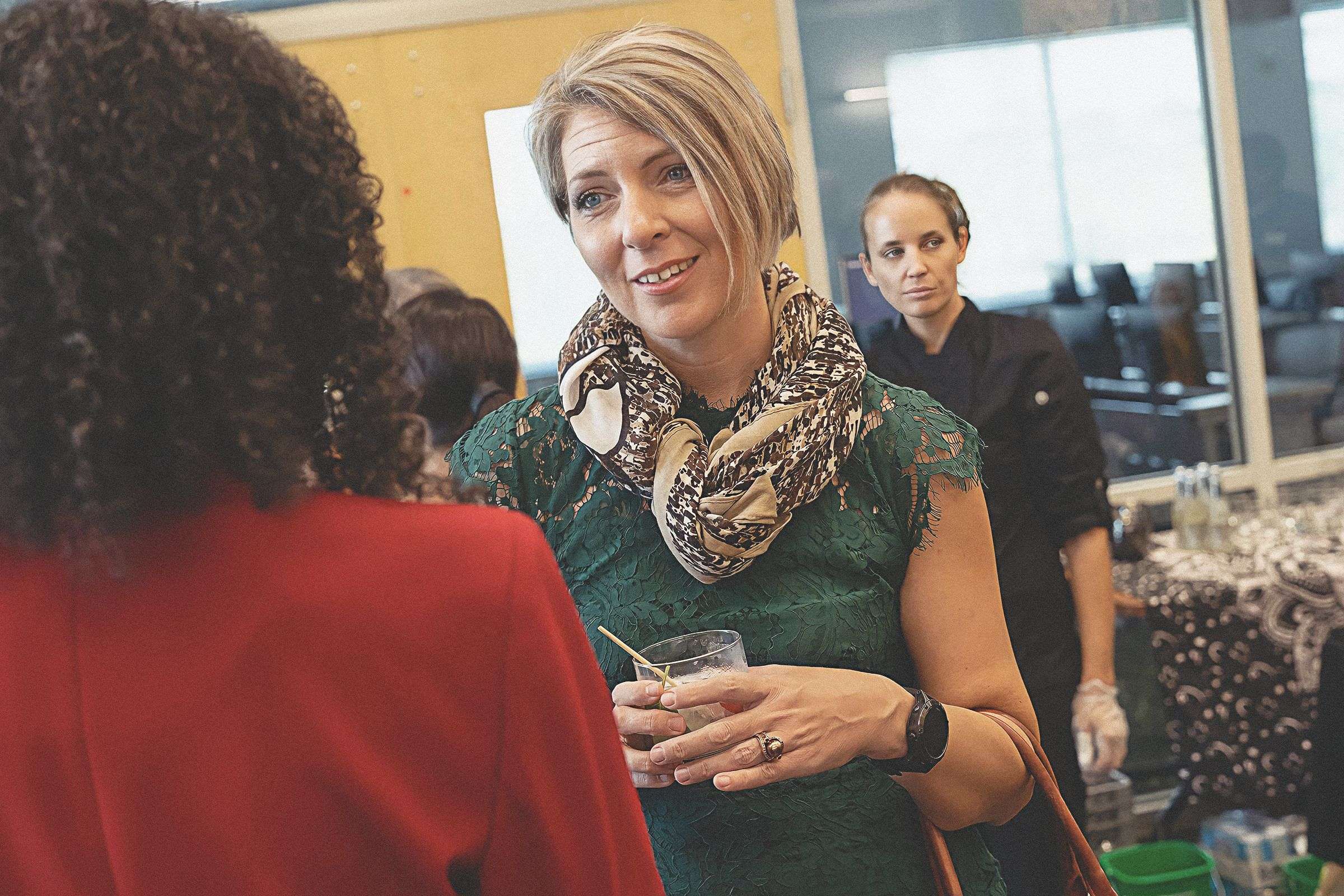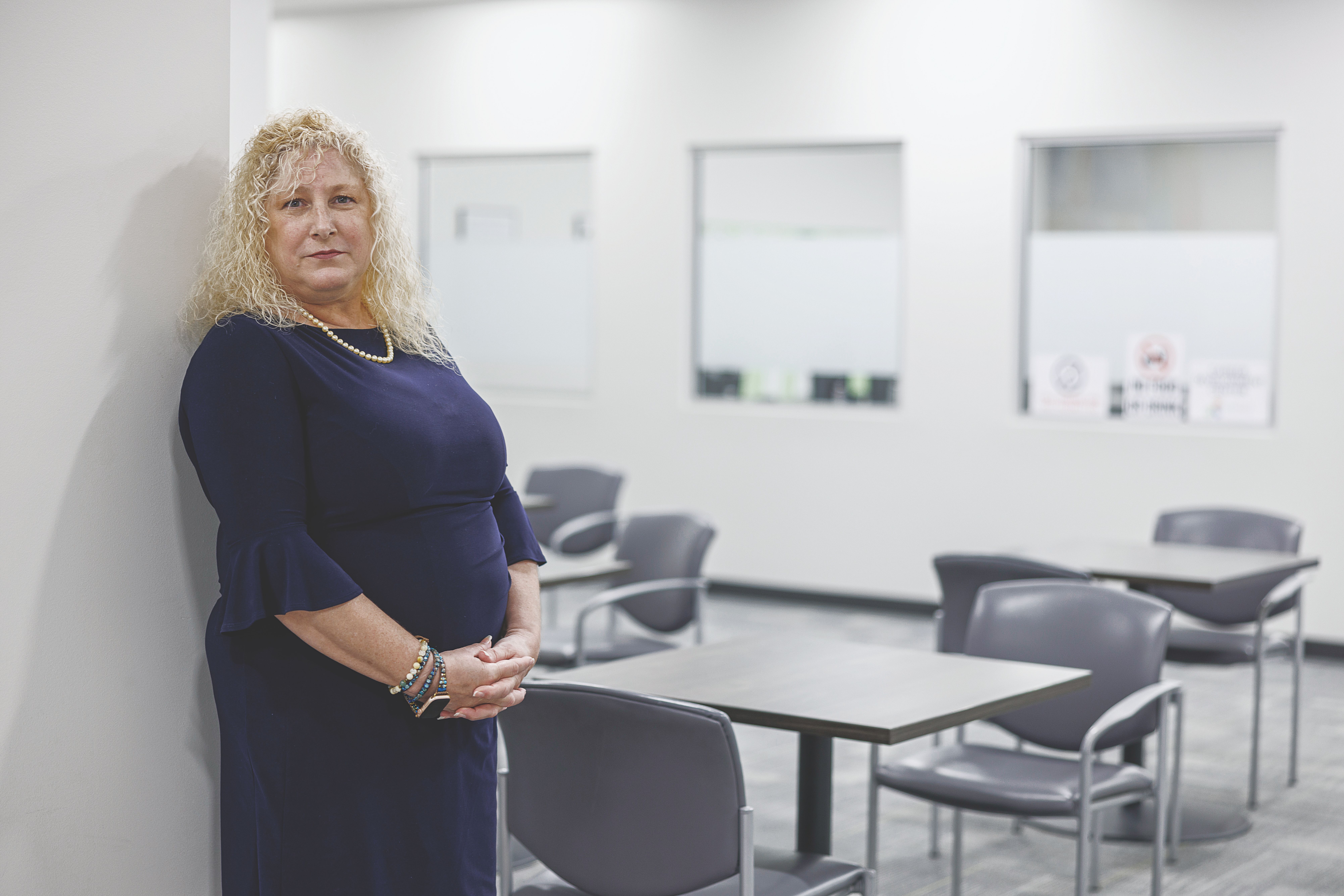It’s been what feels like a generation’s worth of problems all happening within two years: a pandemic, quarantines, steep inflation, supply-chain shortages, a major hurricane, a looming recession. And even if your business has survived all this, chances are you’re still struggling to find good employees.
Hector Sanchez, a vice president for Florida operations at Loos & Co., has seen a host of issues with attracting and retaining employees. He had an employee quit because the man’s rent doubled; then he had two experienced workers retire early because of how much they made selling their homes.
Loos & Co. manufactures high-grade cables, ropes and wires. Its employees are highly skilled machinists or have engineering backgrounds. “We are looking for people with specific skills, and that population just isn’t here in Naples,” Sanchez says. “I joined (Loos) six years ago, and you could tell back then that we were going to face some (hiring) challenges. Well, that’s been severely exacerbated recently.
“Right now, if 10 of the right people came through the door, I’d hire all 10 of them on the spot.”
Workforce issues continue to be among the most perplexing challenges facing businesses in Southwest Florida. And chances are they won’t abate anytime soon.
Remember the Great Resignation? Or maybe it’s the Great Reshuffling? Well, whatever it’s called, it’s still going on. A study by Gartner projected that 37.4 million people would quit their jobs in 2022—a lower level than 2021 but still a 20% increase from pre-pandemic levels. Meanwhile, 40% of workers say they plan to leave their jobs, a number that’s unchanged since 2021, according to management consultant company McKinsey. People are leaving for a variety of reasons, whether it’s childcare complications, health concerns or early retirement. Many people simply decided it was time for a change; they quit for more flexibility or higher pay or to find work that’s more fulfilling. Retail, restaurants and other industries with face-to-face interaction with customers were hit the hardest. The Bureau of Labor Statistics found that the leisure and hospitality industry, for example, had a quit rate that peaked at 6% during the Great Resignation, compared to 4% pre-pandemic. For comparison, in finance, the quit rate stands at about 2% and actually declined during the start of the pandemic.
This reshuffling has hit home, as well. The Regional Economic Research Institute at Florida Gulf Coast University looked at unemployment levels in various industries in Southwest Florida from the onset of the pandemic to November of last year (see p. 52). Hit the hardest were hospitality and leisure, which saw a 65% increase in unemployment. By comparison, the construction industry actually saw a 21% reduction in unemployment. Since, the construction industry has remained strong, while hospitality and leisure employment has yet to bounce back to pre-recession levels. Hurricane Ian has further complicated matters, too: Overall, unemployment in Lee, Collier and Charlotte counties hit 3.6% in October, up from 2.6% the previous month.
Yes, the state, and Southwest Florida in particular, saw an influx of people during the pandemic. But across the board, it seems like there still just aren’t enough workers. Through September 2022, Florida averaged around 665,000 job openings per month. Pre-pandemic, that number rarely got above 450,000. It’s a matter of too many jobs and not enough employees. There’s a range of reasons for so many openings, whether it’s a slow-down in immigration or more people taking on part-time work or starting their own businesses. In Southwest Florida, the rising cost of housing has scared some employees away. But as Sanchez of Loos & Co. observed, the region has traditionally struggled to produce a diverse workforce, leaving some businesses having to search far and wide for employees.
So, it’s time to think differently. Business managers and owners who aren’t willing to adapt to the changes the pandemic has brought will lose workers to more forward-thinking employers. “Businesses are learning to be creative,” says Amy Hanna-Eckenrode, communications manager for CareerSource Southwest Florida. “People aren’t looking for that 9-to-5, work-for-20-years job anymore.”
Here are some ideas to keep you current
Focus more on retention
The cost of losing an employee can be steep. The loss of productivity and the costs associated with the hiring and training processes add up quickly. The Society of Human Resource Management estimates it costs the equivalent of six to nine months of a position’s salary just to find a replacement. So if you’re spending an inordinate amount of time hiring, you can save yourself the stress by focusing more on retention.
The best way to keep your good people is to let them know they’re valued—and that you’re willing to listen to their concerns about the workplace. That may mean offering better benefits or raising pay … but those measures alone may not be enough. A study by McKinsey noted that one business raised salary ranges by 15%, but it didn’t make a dent in a high level of attrition because it didn’t address the high-stress, long-work-hour environment.
And don’t discount professional development; find ways of encouraging your employees to expand their skill sets. It’s not training them to leave for better jobs, but letting them know they’re valued in their current workplace. “This is a time to invest in people,” says Erica Castner, Fort Myers business coach and consultant. “Keep your people happy and engaged.”
Rethink workplace policies
The pandemic altered what many people are looking for in a job. The biggest sticking point is remote work—many employees got used to a hybrid or work-from-home model during the pandemic, and that’s frequently led to a disconnect between upper-level management and lower-level employees. A survey by Gartner found that 68% of employees who said their work could be done remotely are required again to report to an office. More than half of employees surveyed say that a remote work option will be a major factor in determining whether they continue to work for their current employer.
It’s an example of how employers have moved beyond “traditional” job attractions, as described by McKinsey. Salary, benefits and advancement opportunities are all still important, but flexibility has become high on the list of what employees want. As noted in the study, some employers even ask during the interview process about candidates’ preferences when it comes to remote work or flexible work hours. The concept of a four-day workweek hasn’t caught on quite yet in the United States as it has elsewhere, but companies are experimenting with shorter workweeks in an effort to make their workplaces more efficient. Of course, these options may not work for everyone depending on the nature of the business, which can cause hardships for industries such as food and beverage that aren’t built to offer the option of working from home. “Employees want flexibility,” Hanna-Eckenrode says. “At the same time, businesses can only bend so much.”
Help shape the workforce
A concerted effort to change the Southwest Florida workforce has happened within the last several years. The FutureMakers Coalition has a goal of making 55% of Southwest Florida’s workforce have some form of post-secondary education by 2025. It’s one of several examples of businesses and organizations banding together to help train the next generation.
Immokalee Technical College’s Center for Manufacturing Excellence is a hands-on training facility for students preparing to go into careers that involve high-level machining and technological skills. It’s a collaboration among Collier County Public Schools, the Naples Chamber of Commerce and local manufacturing businesses. Loos & Co. has an internship program with the center, and currently employs four people who have gone through the machining technologies program, said Sanchez, who has served on its advisory board. Given that finding skilled machinists can be a challenge, getting involved in the center’s program is a way to develop that skilled workforce locally, he said. Experienced machinists cost more, but the alternative is hiring less-skilled workers and hoping extensive on-the-job training can bring them up to speed—which is less than ideal. “I’d much rather hire the right people and pay them the right salary,” he says.
Address inefficiencies
During tough times, sometimes the best employee solutions have to do with inefficient practices. Finding that your sales team is spending too much time on paperwork? Perhaps now is the time to shift responsibilities or eliminate the paperwork entirely with a new software system. Little things such as expense reports or invoice payments can free up time once automated. “Automation can be your friend,” Castner says. She adds that this is the time to ask a hard question: What are the things we do that just aren’t worth it? “Look at what you do, [then] get rid of things that cost too much time and labor and don’t make much money,” she says.
Ask for help
You’re not the only one feeling the pain. So find people or organizations that can find solutions to your problems. The Florida Small Business Development Centers offer free consulting. CareerSource Southwest Florida has no-cost options to connect employers to job seekers and even funds some work experience programs. Beyond that, start networking, Castner suggested. Look to start a business roundtable where you can share ideas among people in a similar situation. “It can look bleak, but once you start talking it can feel less so,” she says. “Surround yourself with positive people.”
The last two years have been a challenge, to say the least. But those who survived will have gained the skills to navigate tough times in the future. “We will be in this situation again,” Castner says. “We need to be prepared and be ready for change.”





